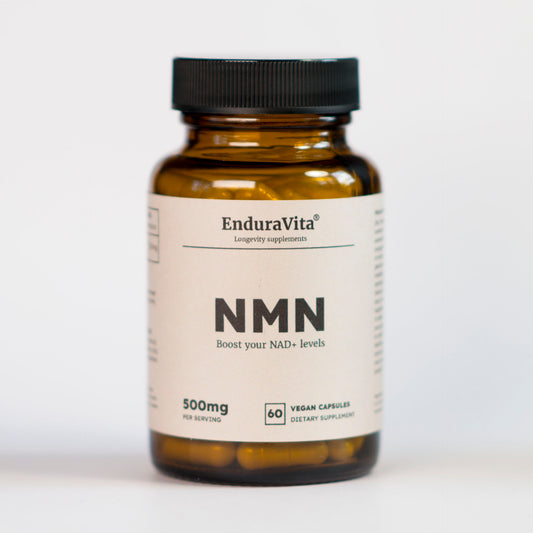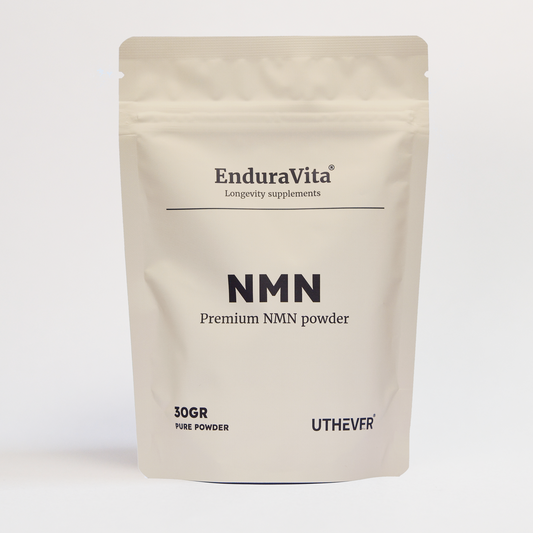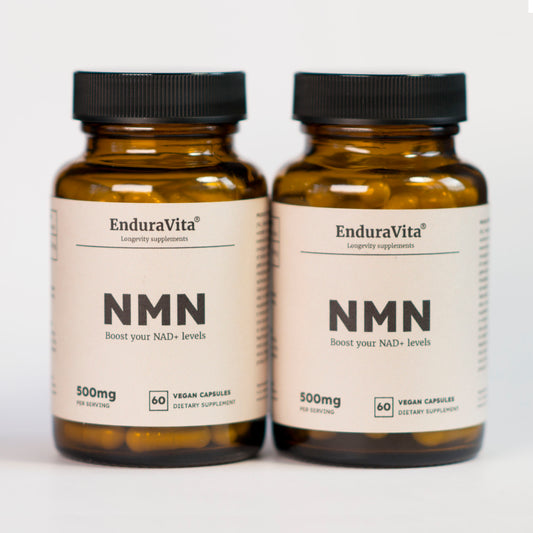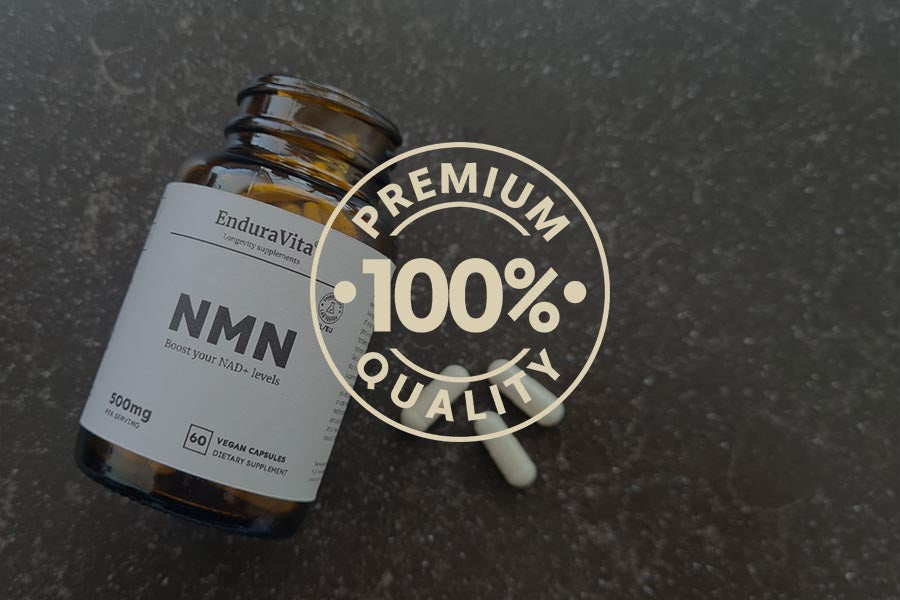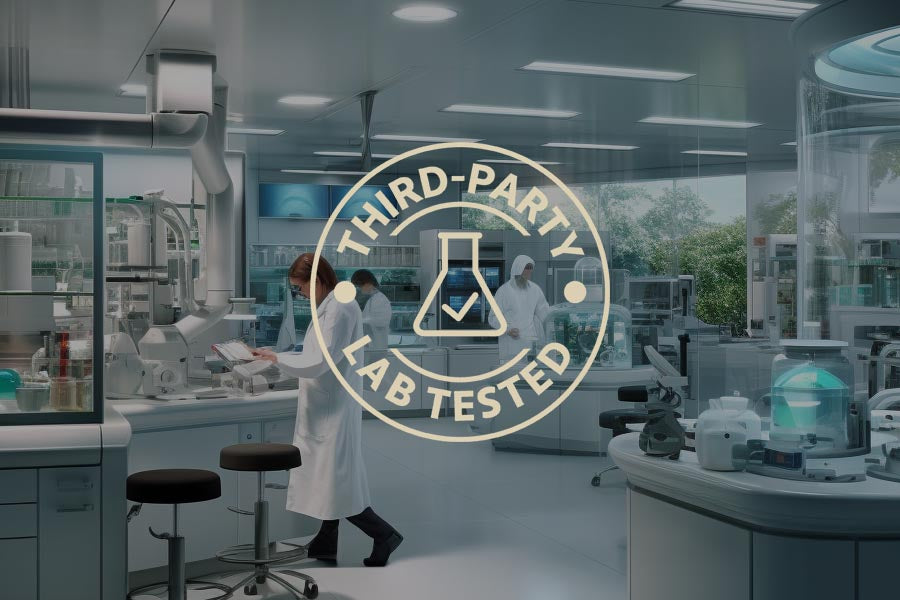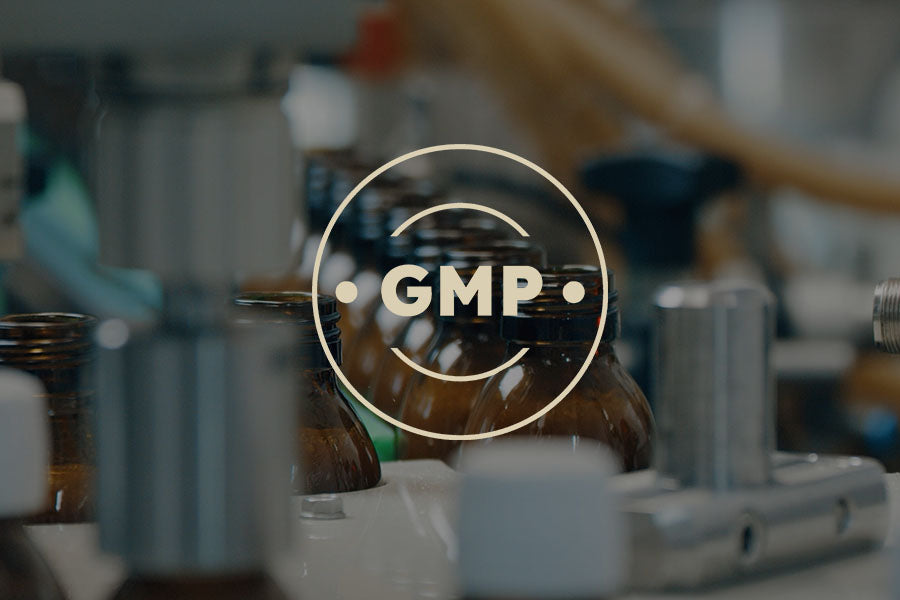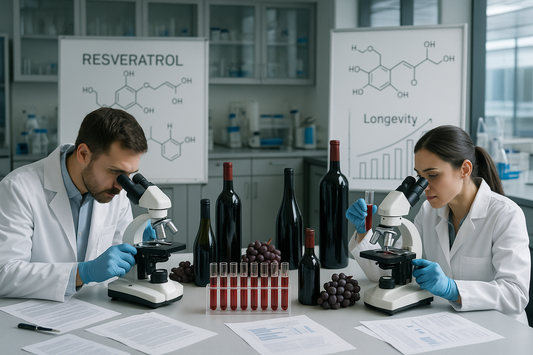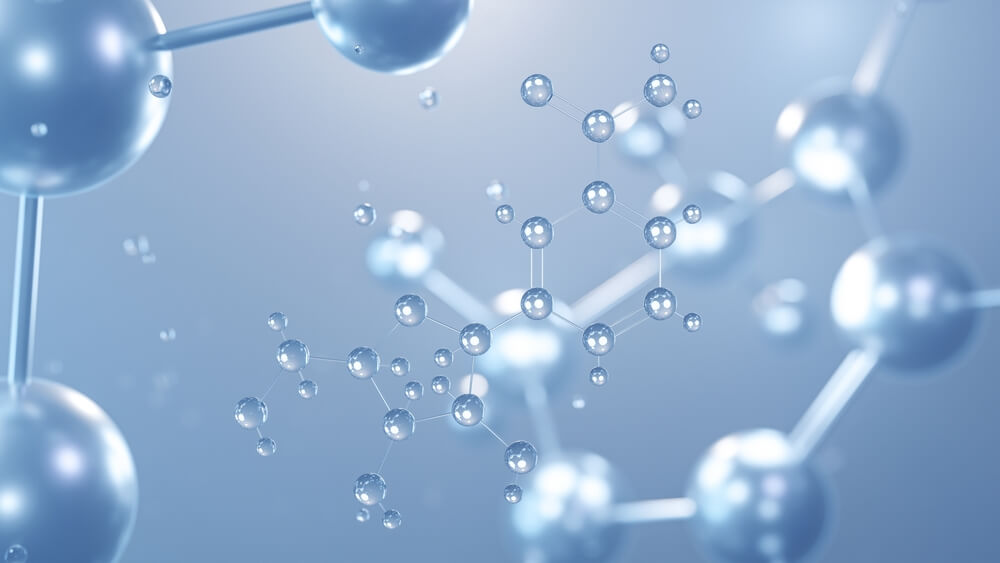
NMN (Nicotinamide Mononucleotide) versus NR (Nicotinamide Riboside)
NMN (Nicotinamide Mononucleotide) and NAD (Nicotinamide Adenine Dinucleotide) are becoming increasingly popular due to their potential role in improving cellular energy and supporting overall health. People are curious about these compounds, especially since they have been in the news lately for their life-extending benefits.
Both NMN and NR (Nicotinamide Riboside) are biosynthetic precursors of NAD, a crucial molecule involved in cellular energy production. Because NAD levels naturally decline with age, people focus on ways to replenish these levels, with NMN and NR often mentioned as potential solutions. But what is the difference between NMN and NR? And which one is preferred?
What is NAD, NMN, and NR?
To get a complete picture of how NMN and NR contribute to our health, it is important to understand what NAD, NMN, and NR exactly are.
Namibian Dollar
NAD, or Nicotinamide Adenine Dinucleotide, is a co-enzyme that is present in every cell of the body and is essential for cellular energy production. It plays an important role in supporting the mitochondria, the 'powerhouses' of the cells, which convert glucose and fats into usable energy. As we age, our NAD levels naturally decline, which can lead to reduced energy, fatigue, and even certain age-related conditions.
Nicotinamide Riboside
Nicotinamide Riboside, or simply NR, is a vitamin B3 compound and a precursor of NAD. It helps in the production of NAD in the body, making it a popular choice for people who want to increase their NAD levels. NR is available as a supplement and is the subject of promising research related to energy production and aging.
NMN
Nicotinamide Mononucleotide (NMN) is another precursor of NAD and is converted into NAD in the body through an enzymatic reaction. Like NR, NMN has received a lot of attention due to its potential to increase NAD levels, making it a popular choice for health-conscious individuals.

NMN chosen over Nicotinamide Riboside by leading experts
The discussion about the effectiveness of NMN versus Nicotinamide Riboside has garnered a lot of attention from scientists and health experts around the world. One of the most prominent experts in this field is Dr. David Sinclair, a professor of genetics at Harvard University. Dr. Sinclair is globally renowned for his groundbreaking research on the role of NAD in the aging process and the possible ways to slow down aging.
In his research, Dr. Sinclair has extensively studied both NR and NMN and investigated how these NAD precursors can affect cellular health and longevity. Despite both compounds being promising, he has personally preferred NMN. Dr. Sinclair himself uses NMN daily because he believes in the potential of this compound to effectively increase NAD levels and thus reduce the adverse effects of aging.
Research on NMN and NR
It is important to understand how NMN and NR differ at the molecular level, especially when it comes to how they are absorbed and used by the body. One notable difference between these compounds is their molecular size. NMN is significantly larger than Nicotinamide Riboside, which prevents it from being directly transported through the cell membrane. Due to this larger molecular size, NMN must first be broken down into a smaller, more absorbable form before it can enter the cell. This makes NR somewhat easier to absorb because it is smaller and more stable and can pass directly through the cell membrane. Once inside the cell, NR can quickly be converted into NAD and thus contribute to cellular energy production.
These differences in molecular size and absorption have led to much research into the effectiveness and bioavailability of both NMN and NR. Although NR may be more easily absorbed directly, research indicates that NMN, once it is broken down and has entered the cell, is equally capable of raising NAD levels and contributing to cellular energy production.
Key differences and factors
Although both NMN and NR work as NAD precursors, there are important differences between these two compounds. The most distinguishing difference is that NMN is one step closer to producing NAD compared to NR. Here is how the process works:
- NR to NAD route: NR must first be converted into NMN before it can be used to create NAD. This means that NR undergoes the intermediate step of phosphorylation to become NMN, which is then converted into NAD.
- NMN to NAD pathway: NMN, on the other hand, does not need to be converted before it can contribute to the production of NAD. Once inside the cell, NMN is directly converted into NAD, making it more efficient in this process.
NAD is crucial for the functioning of sirtuins and PARP enzymes, which play an important role in DNA repair and the maintenance of the epigenome.
Other differences between NR and NMN:
- NMN is greater than NR.
- NMN supplements are less widely available than NR supplements.
- Although both compounds are subjects of scientific research, more research has been conducted on NR.
- NR supplements are generally available in powder and capsule form, while NMN supplements are usually only available in powder form.
- NR is more sensitive to degradation by stomach acid, while NMN is considered more stable for oral use.
Comparison of bioavailability
NR is often considered more bioavailable due to its smaller molecular size, making it easier to be absorbed through the cell membrane. Once absorbed, NR is converted into NMN, which then contributes to the production of NAD. NMN, on the other hand, although larger and requiring an extra step to enter the cell, also shows promising bioavailability. New research suggests that the body may have specific transport mechanisms that support the use of NMN, which can aid in its absorption and conversion to NAD.
Is NMN or NR preferred?
Based on scientific research, NMN appears to have an advantage over NR in terms of effectiveness in increasing NAD levels. Moreover, studies show that NMN may yield better results for supporting anti-aging mechanisms than NR. This includes improvements in cellular energy production and DNA repair, as well as activating sirtuins that are associated with a longer lifespan.
At the molecular level, NMN also resembles NAD more than NR, which can further improve efficiency. This molecular proximity may make NMN better suited for people who are focused on improving their NAD levels and supporting their overall health.
Although both compounds are potentially useful for increasing NAD, research indicates that NMN may be preferred by those seeking the most effective and direct way to boost NAD.
Order NMN at EnduraVita
If you are looking for high-quality NMN, then EnduraVita is the right place for you. It is important to ensure that NMN supplements are used in the correct dosage to guarantee maximum effectiveness and safety. Take a look at these blog about NMN dosage to find the recommended dosage for your specific needs.
Conclusion
Although NMN and NR are both important for increasing NAD levels, NMN seems to have a slight edge. This is mainly due to the molecular similarity with NAD and the support of recent research suggesting that NMN contributes more directly and possibly more effectively to NAD production. Despite NR offering easier absorption through cell membranes, the potential anti-aging effects and the direct conversion process of NMN to NAD are points in favor of NMN. Therefore, NMN, as recommended by leading experts in the field, including Dr. David Sinclair, is often seen as a more direct and possibly more powerful way to support and improve health at the cellular level.

